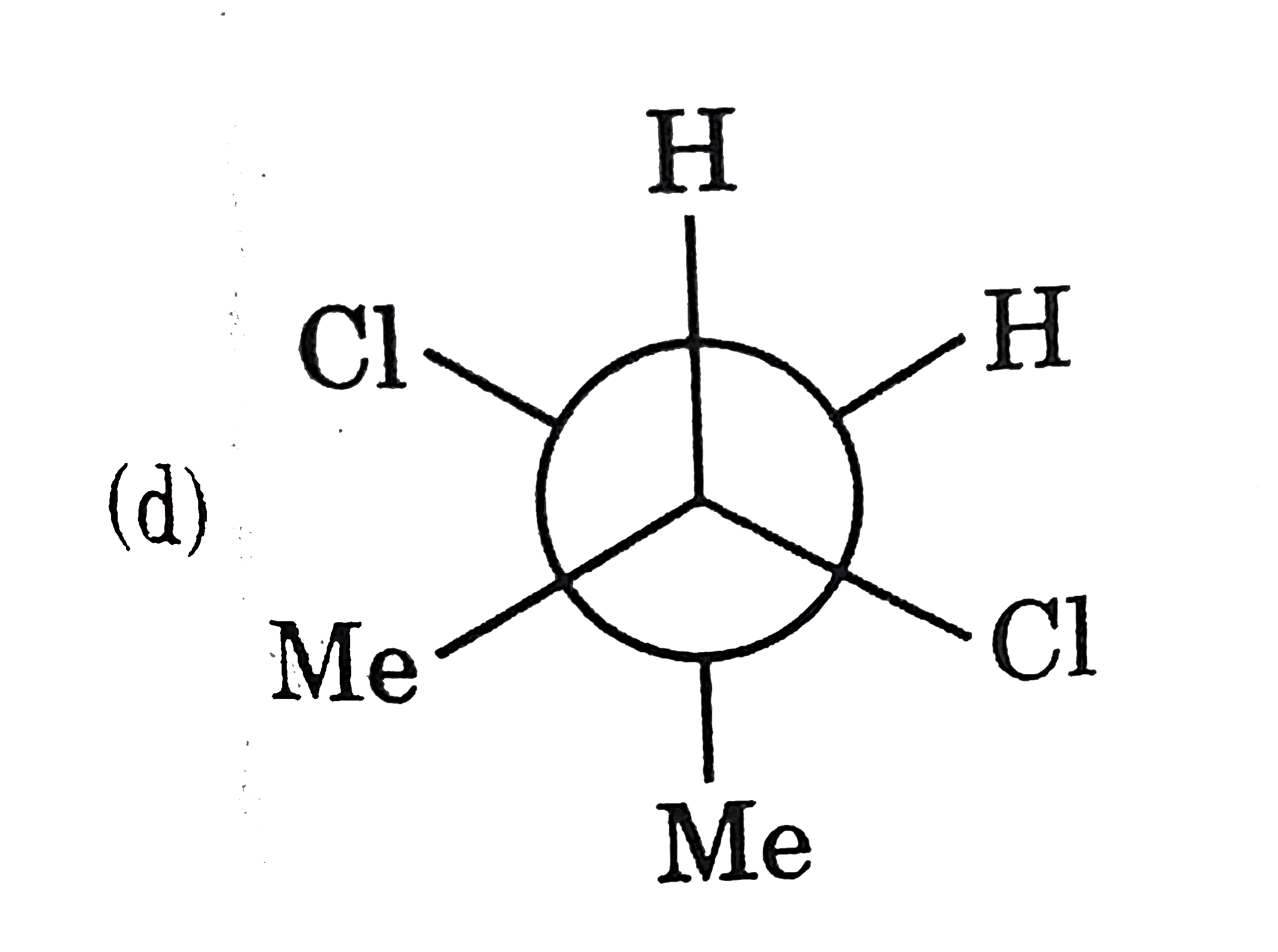Which of the following does not show optical isomerism ?
[Co(NH3)3CI3]
[Co(en)CI2)(NH3)2]+
[Co(en)3]3+
[Co(en)2CI2]+
The correct Answer is:A
To determine which of the given coordination compounds does not show optical isomerism, we need to analyze the symmetry of each compound. Optical isomerism occurs when a compound can exist in two non-superimposable mirror images, which typically requires the absence of a plane of symmetry.
1. Understanding Optical Isomerism:
- Optical isomerism arises in chiral molecules, which lack any symmetry elements such as a plane of symmetry, center of symmetry, or axis of symmetry.
2. Analyzing the Options:
- We need to evaluate each compound provided in the options to check for the presence of a plane of symmetry.
3. Option 1: (Co(NH3)3Cl3):
- This compound can exist in two geometrical forms: facial (fac) and meridional (mer).
- Both forms have a plane of symmetry. For example, in the meridional isomer, if you slice through the center, the left and right halves are identical.
- Conclusion: This compound does not show optical isomerism.
4. Option 2: (Ni(en)(Cl)2):
- Here, "en" stands for ethylenediamine, which is a bidentate ligand.
- The compound can exist in a cis form where the two Cl ligands are adjacent. This arrangement does not have a plane of symmetry.
- Conclusion: This compound shows optical isomerism.
5. Option 3: (Co(en)3):
- This compound is also chiral as it lacks any plane of symmetry due to the arrangement of the bidentate ligands.
- Conclusion: This compound shows optical isomerism.
6. Option 4: (Cr(NH3)4Cl2)+:
- Similar to option 2, this compound can also exist in a cis form where the two Cl ligands are adjacent.
- This arrangement does not have a plane of symmetry.
- Conclusion: This compound shows optical isomerism.
Final Answer:
The compound that does not show optical isomerism is Option 1: (Co(NH3)3Cl3).
- Optical isomerism arises in chiral molecules, which lack any symmetry elements such as a plane of symmetry, center of symmetry, or axis of symmetry.
- We need to evaluate each compound provided in the options to check for the presence of a plane of symmetry.
- This compound can exist in two geometrical forms: facial (fac) and meridional (mer).
- Both forms have a plane of symmetry. For example, in the meridional isomer, if you slice through the center, the left and right halves are identical.
- Conclusion: This compound does not show optical isomerism.
- Here, "en" stands for ethylenediamine, which is a bidentate ligand.
- The compound can exist in a cis form where the two Cl ligands are adjacent. This arrangement does not have a plane of symmetry.
- Conclusion: This compound shows optical isomerism.
- This compound is also chiral as it lacks any plane of symmetry due to the arrangement of the bidentate ligands.
- Conclusion: This compound shows optical isomerism.
- Similar to option 2, this compound can also exist in a cis form where the two Cl ligands are adjacent.
- This arrangement does not have a plane of symmetry.
- Conclusion: This compound shows optical isomerism.
The compound that does not show optical isomerism is Option 1: (Co(NH3)3Cl3).
Topper's Solved these Questions
- COORDINATION COMPOUNDSBook:R SHARMAChapter:COORDINATION COMPOUNDSExercise:Question Bank (Building the knowledge)
Explore 38 Videos
- CHEMISTRY IN EVERYDAY LIFEBook:R SHARMAChapter:CHEMISTRY IN EVERYDAY LIFEExercise:Archives
Explore 11 Videos
- ELECTROCHEMISTRYBook:R SHARMAChapter:ELECTROCHEMISTRYExercise:Follow-up Test 11
Explore 7 Videos
Similar Questions
Knowledge Check
which of the following sdoes not show optical isomerism ?
A[Co(NH3)3Cl3]B[Co(en)Cl2(NH3)2]+C[Co(en)3]3+D[Co(en)2Cl2]+
(e = ethylenediammine)Which of the following will not show optical isomerism ?
ACl−CH=C=CH−ClBBr−CH=C=CH−BrC D
D
Which of the following will not show optical isomerism ?
ACl-CH=C=C=CH-ClBCl-CH=C=C=C=CH-ClC D
D
Which of the following does not show geometrical isomerism?
View SolutionWhich of the following does not show geometrical isomerism?
View SolutionWhich of the following does not show geometrical isomerism?
View SolutionWhich of the following does not show geometrical isomerism?
View SolutionWhich of the following does not show geometrical isomerism
View Solution

